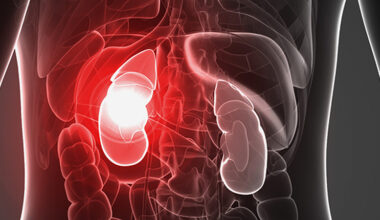Intermittent fasting has gained significant popularity in recent years as a powerful approach to weight loss, improved health, and increased longevity. This way of eating involves alternating periods of fasting and eating, and there are various methods to choose from, allowing individuals to find the one that suits their lifestyle and preferences. In this comprehensive guide, we will explore six different ways to practice intermittent fasting, discuss their benefits, and provide tips on maintaining each method successfully.
Introduction to Intermittent Fasting
Intermittent fasting is a dietary approach that involves alternating periods of fasting and eating. It is not a diet in the traditional sense but rather an eating pattern that focuses on when to eat rather than what to eat. By restricting the window of time in which food is consumed, intermittent fasting can lead to various health benefits, including weight loss, improved insulin sensitivity, reduced inflammation, and increased autophagy, the body’s natural cellular repair process.
Different intermittent fasting methods exist, and each offers its own unique approach to fasting and eating schedules. It’s important to note that individual experiences may vary, and what works for one person may not work for another. It’s essential to find the method that aligns with your lifestyle, preferences, and health goals.
The 12-Hour Fast
The 12-hour fast is an excellent option for beginners or those who prefer a less restrictive fasting schedule. This method involves fasting for 12 hours each day, usually including the period of sleep. By adhering to a set fasting window, individuals can experience the benefits of intermittent fasting without feeling overly deprived or restricted.
Research suggests that fasting for 10-16 hours can stimulate the body to utilize its fat stores for energy, leading to weight loss. During the fasting period, the body releases ketones into the bloodstream, which can further enhance fat burning. The 12-hour fast is relatively easy to follow, as much of the fasting occurs during sleep, and individuals can consume the same number of calories each day.
To implement the 12-hour fast, choose a fasting window that works best for you. For example, you could fast between 7 p.m. and 7 a.m., ensuring you finish dinner before 7 p.m. and wait until 7 a.m. to have breakfast. This method allows for a consistent fasting period while incorporating a full night’s sleep.
The 16:8 Method
The 16:8 method, also known as the Leangains diet, involves fasting for 16 hours a day and restricting the eating window to 8 hours. This method can be beneficial for individuals who have already tried the 12-hour fast but did not see the desired results.
During the 16:8 fast, males typically fast for 16 hours, while females fast for 14 hours. A common approach is to finish the last meal of the day by 8 p.m. and then skip breakfast the next day, breaking the fast around noon. This allows for an 8-hour eating window, during which individuals can consume their daily caloric needs.
Research on mice following a high-fat diet found that limiting the feeding window to 8 hours protected them from obesity, inflammation, diabetes, and liver disease, even when consuming the same total number of calories as mice with unrestricted eating. Although more studies are needed to confirm these findings in humans, the 16:8 method shows promise for weight management and improved metabolic health.
The 5:2 Diet
The 5:2 diet, also known as the Fast diet, involves eating a standard amount of healthy food for 5 days of the week and reducing calorie intake on the remaining 2 days. On fasting days, males generally consume around 600 calories, while females consume around 500 calories.
The fasting days should be separated throughout the week, with at least one non-fasting day between them. For example, individuals may choose to fast on Mondays and Thursdays and eat regularly on the other days. This method allows for a calorie deficit on fasting days while maintaining a balanced and healthy diet on non-fasting days.
A study involving overweight or obese women found that both continuous calorie restriction and the 5:2 diet led to similar weight loss. Additionally, the study showed improvements in insulin levels and insulin sensitivity among participants following the 5:2 diet. Another small-scale study found that women following this fasting style lost a significant percentage of their body weight and fat, although these measurements returned to usual after returning to typical eating patterns.
Alternate Day Fasting
Alternate day fasting involves fasting every other day, with some variations allowing for a complete avoidance of solid foods on fasting days, while others permit up to 500 calories. On feeding days, individuals can eat as much as they want, without specific restrictions.
Research suggests that alternate day fasting is effective for weight loss and heart health in both healthy and overweight adults. In a study, participants lost an average of 5.2 kilograms (11 pounds) over a 12-week period. However, it’s important to note that alternate day fasting is an extreme form of intermittent fasting and may not be suitable for beginners or those with certain medical conditions. Maintaining this fasting schedule in the long term can also be challenging.
The Eat-Stop-Eat Diet
The Eat-Stop-Eat diet involves fasting completely for 1 or 2 days a week, with no food consumed for a 24-hour period. Many people choose to fast from breakfast to breakfast or lunch to lunch, allowing for a full day of fasting.
During the fasting period, individuals can have water, tea, and other calorie-free drinks. On non-fasting days, individuals should return to their regular eating patterns, without specific restrictions on food choices.
The 24-hour fast can be challenging, especially in the beginning, and may cause fatigue, headaches, or irritability. However, these side effects often diminish over time as the body adjusts to the new eating pattern. It may be beneficial to start with shorter fasting periods, such as 12 or 16 hours, before transitioning to a 24-hour fast.
The Warrior Diet
The Warrior Diet is a relatively extreme form of intermittent fasting that involves a 20-hour fasting window and a 4-hour eating window. During the fasting period, individuals consume very little food, usually just a few servings of raw fruits and vegetables. The main meal is eaten at night, within the 4-hour eating phase.
Supporters of the Warrior Diet believe that humans are natural nocturnal eaters, and consuming food at night aligns with our circadian rhythms. During the eating phase, it is important to include a variety of vegetables, proteins, healthy fats, and carbohydrates to ensure adequate nutrient intake.
While it is possible to eat some foods during the fasting period, strict adherence to the guidelines of what and when to eat can be challenging in the long term. Additionally, some individuals may find it difficult to consume a large meal close to bedtime. It is important to consider potential nutrient deficiencies, such as fiber, when following this diet, as it may have adverse effects on digestive and immune health.
Tips for Successful Intermittent Fasting

Regardless of the intermittent fasting method you choose, there are several tips and strategies that can help you successfully follow the fasting schedule and maximize the benefits:
- Stay hydrated: Drink plenty of water throughout the day to stay hydrated and curb hunger.
- Eat nutrient-dense meals: Focus on consuming whole, nutrient-dense foods during your eating windows to ensure you’re meeting your nutritional needs.
- Listen to your body: Pay attention to your hunger and fullness cues. Eat when you’re hungry and stop eating when you’re satisfied.
- Plan your meals: Plan your meals in advance to ensure you have nutritious food options available during your eating windows.
- Stay busy: Engage in activities or hobbies to keep your mind occupied and distract yourself from thoughts of food during fasting periods.
- Seek support: Join online communities or find an accountability partner to stay motivated and share experiences with others practicing intermittent fasting.
- Be flexible: Be open to adjusting your fasting schedule or method if needed. What works for one person may not work for another, so be willing to experiment and adapt.
Potential Risks and Considerations
While intermittent fasting can be a safe and effective dietary approach for many individuals, it may not be suitable for everyone. It is important to consider the following risks and considerations before starting an intermittent fasting regimen:
- Nutrient deficiencies: Depending on the method and duration of fasting, there is a risk of not consuming enough essential nutrients. It is crucial to prioritize a balanced diet during eating windows to ensure adequate nutrient intake.
- Disordered eating patterns: Individuals with a history of disordered eating or those prone to developing disordered eating behaviors should approach intermittent fasting with caution. It is essential to maintain a healthy relationship with food and prioritize overall well-being.
- Medical conditions: Individuals with certain medical conditions, such as diabetes, low blood sugar, or a history of eating disorders, should consult with a healthcare professional before starting intermittent fasting.
- Medication adjustments: Some medications may need to be adjusted when practicing intermittent fasting. It is important to consult with a healthcare professional to ensure medication effectiveness and safety.
- Pregnancy and breastfeeding: Intermittent fasting is generally not recommended during pregnancy or breastfeeding, as it may affect nutrient availability for both the mother and baby. It is best to consult with a healthcare professional for personalized guidance.
Conclusion
Intermittent fasting offers a flexible and effective approach to weight loss, improved health, and increased longevity. By choosing from various fasting methods, individuals can find the one that aligns with their lifestyle, preferences, and health goals. Whether you opt for the 12-hour fast, the 16:8 method, the 5:2 diet, alternate day fasting, the Eat-Stop-Eat diet, or the Warrior Diet, it is crucial to prioritize nutrient-dense meals, stay hydrated, and listen to your body’s signals. With proper planning, support, and consideration of individual needs, intermittent fasting can be a sustainable and rewarding dietary approach for long-term health and well-being.
Disclaimer: This article is for informational purposes only and should not be considered medical advice. Please consult with a healthcare professional before starting any new diet or fasting regimen.






